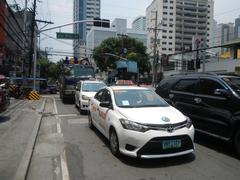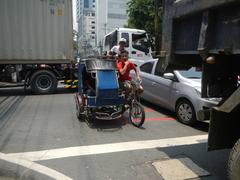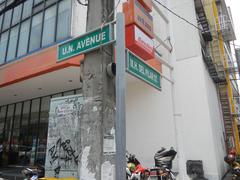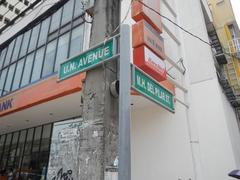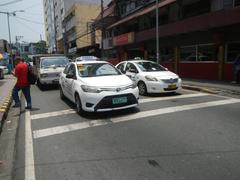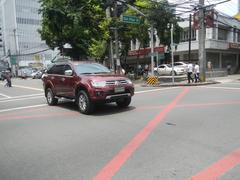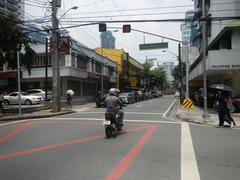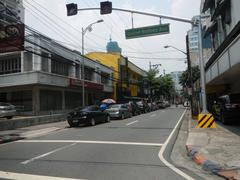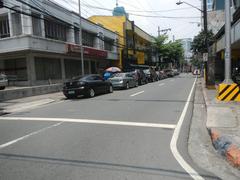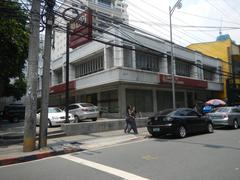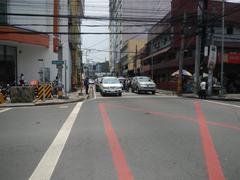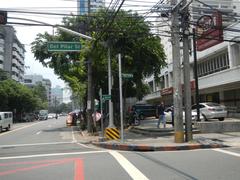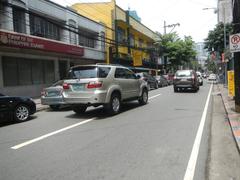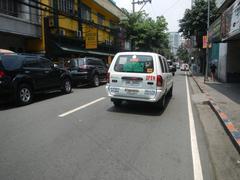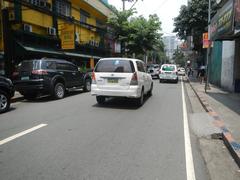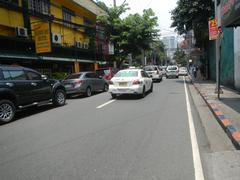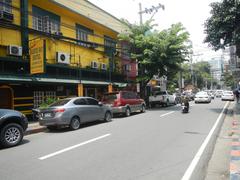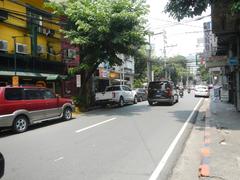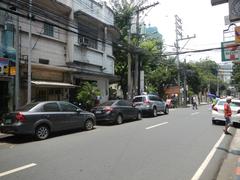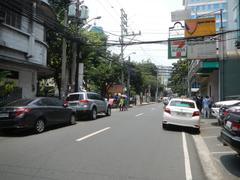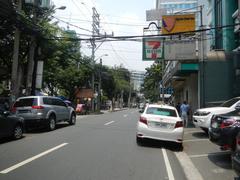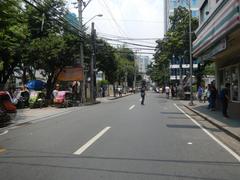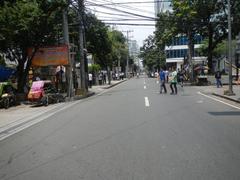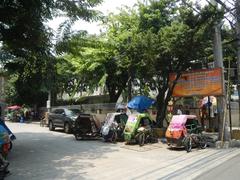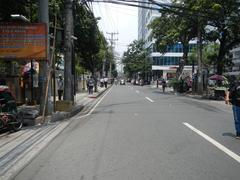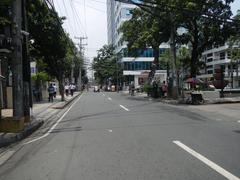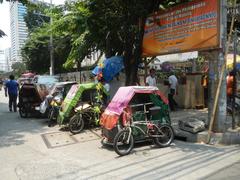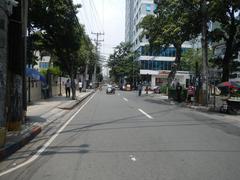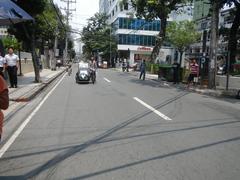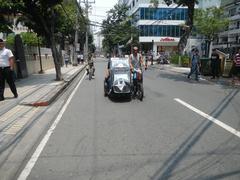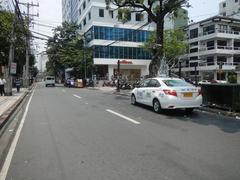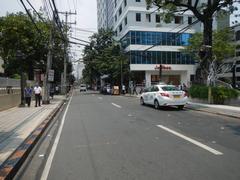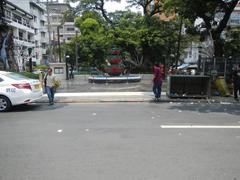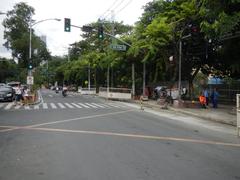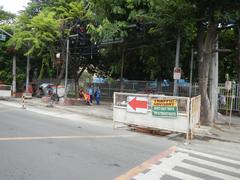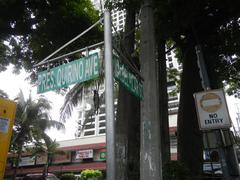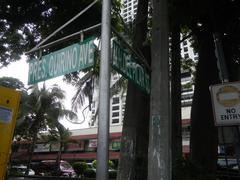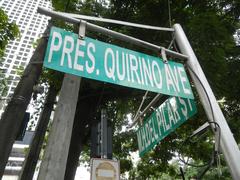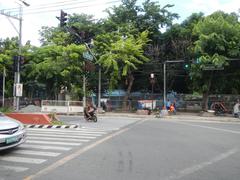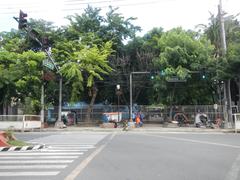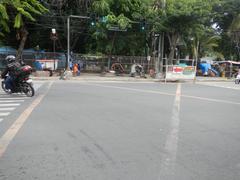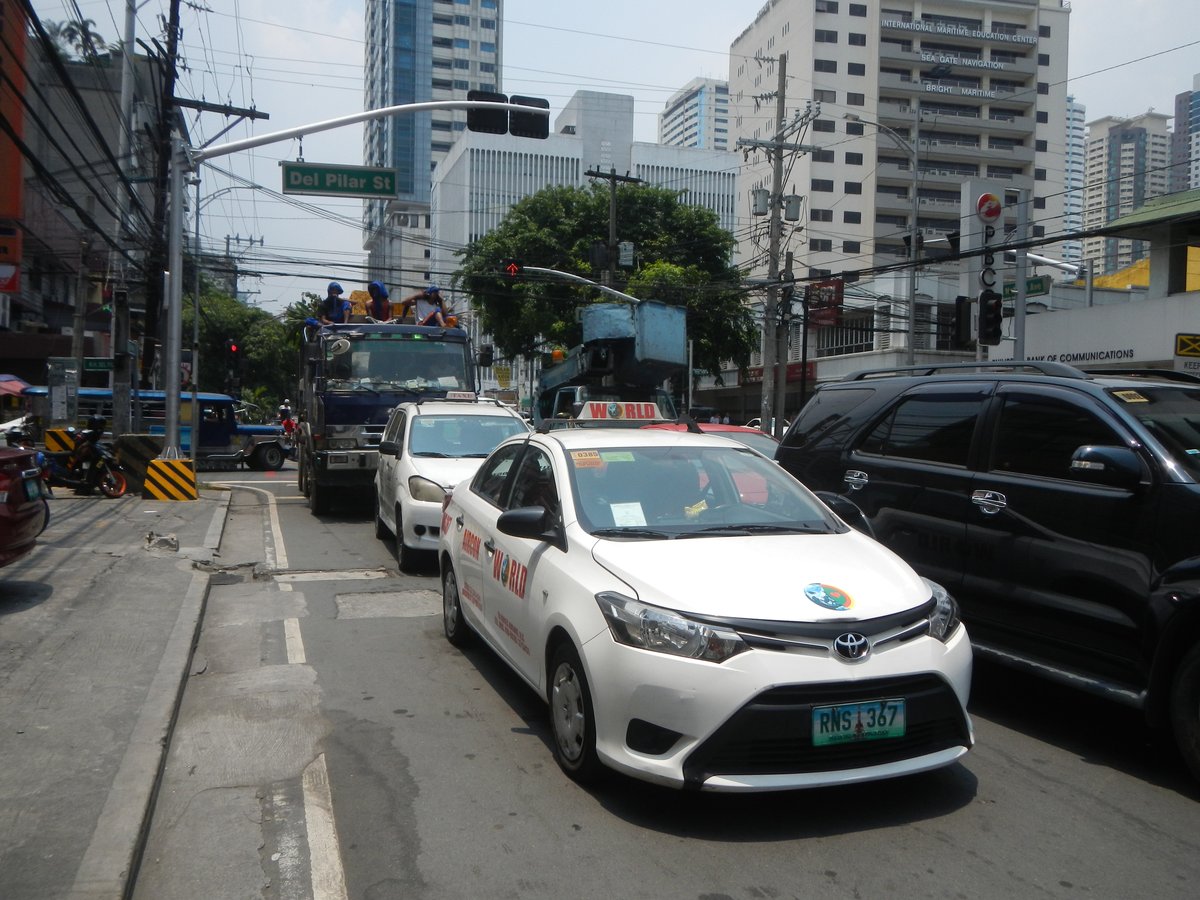
Del Pilar Street Metro Manila: Visiting Hours, Tickets, and Historical Sites Guide
Date: 15/06/2025
Introduction
Del Pilar Street, officially named Marcelo H. del Pilar Street, is a historically significant and culturally vibrant corridor in Metro Manila. Spanning the districts of Malate and Ermita, this thoroughfare encapsulates Manila’s layered colonial past, dynamic urban life, and ongoing journey toward heritage preservation. Once known as Calle Real and tracing the original shoreline of Manila Bay, Del Pilar Street connects visitors with architectural treasures, religious landmarks, and the pulse of modern city living (Traveler on Foot). This comprehensive guide provides essential information on visiting hours, ticketing, transportation, accessibility, preservation challenges, and practical tips for exploring Del Pilar Street.
Table of Contents
- Historical Background and Urban Evolution
- Architectural and Cultural Highlights
- Key Heritage Sites and Landmarks
- Visitor Information: Hours, Tickets, and Accessibility
- Getting There and Around
- Practical Tips and Safety
- Preservation Challenges and Efforts
- Frequently Asked Questions (FAQ)
- Conclusion
- References
Historical Background and Urban Evolution
Early Origins and Colonial Foundations
Originally known as Calle Real during the Spanish colonial period, Del Pilar Street was a vital coastal route linking Intramuros with southern provinces like Cavite. It facilitated trade, travel, and military movements, and was lined with elegant bahay na bato residences, rice fields, and historic churches (Traveler on Foot). Its strategic importance was further underscored by military sites such as Plaza Militar and Fort San Antonio Abad.
American Colonial Period and Urban Expansion
The early 20th century brought modernization through the Burnham Plan, with the Americans introducing new civic buildings, schools, and entertainment venues. While many Malate streets were renamed, Calle Real became M.H. del Pilar Street, honoring nationalist leader Marcelo H. del Pilar. The area evolved into a cosmopolitan hub, home to theaters, hotels, and shops that signaled Manila’s transformation into a modern city (Kurby Blog).
Architectural and Cultural Highlights
Art Deco and Modernist Influences
By the 1930s, Del Pilar Street showcased notable Art Deco architecture, exemplified by the Gaiety Theater designed by National Artist Juan Nakpil (Golden Island Señorita). The street’s residential buildings ranged from pre-war mansions to mid-century apartments, reflecting Manila’s architectural evolution (Kurby Blog).
Post-War Reconstruction
World War II left much of Del Pilar Street in ruins. Reconstruction blended neoclassical and modernist styles, and the area became a focal point for commerce, hospitality, and entertainment, benefiting from its proximity to Roxas Boulevard and Manila Bay.
Renaming and National Identity
The renaming of Calle Real to M.H. del Pilar Street symbolized Filipino nationalism and the city’s movement toward independence, honoring the legacy of a key figure in the Propaganda Movement (Medium).
Key Heritage Sites and Landmarks
Malate Church (Our Lady of Remedies Parish)
- Location: 2000 M.H. del Pilar Street
- Visiting Hours: Daily, 6:00 AM – 7:00 PM
- Tickets: Free entry
This Spanish colonial-era church, originally built in 1588, features a blend of Baroque and Muslim architectural influences. Declared an Important Cultural Property in 2023, it is a focal point for religious and community activities (Out of Town Blog).
Rajah Sulayman Park
- Location: In front of Malate Church and Roxas Boulevard
- Visiting Hours: Daily, 5:00 AM – 10:00 PM
- Tickets: Free entry
A popular green space for sunset viewing, community gatherings, and events (Spot.ph).
North Sy-Quia Apartments
- Location: 1991 M.H. del Pilar Street
- Visiting Hours: Exterior viewing only
A prominent 1930s Art Deco residential building; its façade is a testament to Manila’s pre-war heritage.
Arkong Bato (Stone Arch), Valenzuela
- Visiting Hours: Accessible anytime; Arkong Bato Linear Park open 6:00 AM – 10:00 PM
- Tickets: Free entry
A 19th-century stone arch in Valenzuela, marking the gateway to the Arkong Bato Linear Park.
Manila Baywalk
- Visiting Hours: Open 24/7
A scenic promenade popular for its sunsets, open-air dining, and street performances.
Visitor Information: Hours, Tickets, and Accessibility
- Street Access: Del Pilar Street is a public thoroughfare, open 24/7.
- Churches and Parks: Most sites are open from 6:00 AM to 7:00 PM. Rajah Sulayman Park is open until 10:00 PM.
- Tickets: The street and most landmarks are free to enter. Some guided tours or events may require tickets.
- Guided Tours: Available through local tour operators and at Malate Church by contacting the parish office.
Accessibility
- Major hotels and malls have ramps and accessible restrooms.
- Sidewalk conditions vary; some historic buildings have limited accessibility due to steps or uneven surfaces.
- LRT-1 and PNR stations offer ramps and priority seating, but some jeepneys and buses may not be accessible.
Getting There and Around
- Public Transit: LRT-1 (Vito Cruz, Pedro Gil stations), PNR (San Andres station), jeepneys, and buses serve the area (Moovit).
- Taxis/Ride-Hailing: Widely available; advisable for convenience or late-night travel.
- Walking: The Malate/Ermita section is pedestrian-friendly but requires vigilance around traffic.
- Cycling: Possible in Arkong Bato Linear Park and quieter stretches.
Practical Tips and Safety
- Best Time to Visit: Early morning or late afternoon for cooler weather and fewer crowds. The dry season (December–May) is ideal.
- Dress Code: Modest attire is recommended when visiting churches.
- Safety: Watch for pickpockets in crowded areas. Avoid poorly lit streets at night. Carry bottled water and sunscreen.
- Language: Basic Filipino phrases are helpful; English is widely understood.
Preservation Challenges and Efforts
Urban Development Pressures
Rapid urbanization and commercial interests endanger many heritage structures. The loss of landmarks such as the Manila Jai Alai Building underscores the constant threat to Manila’s built heritage (The Diplomat).
Infrastructure and Overcrowding
Heavy traffic and congestion, especially during peak tourist seasons, strain public amenities and can detract from the visitor experience (Standard Insights). Limited pedestrian infrastructure and public transport inefficiencies are ongoing challenges.
Heritage Protection
Local government has declared several sites as Important Cultural Properties, but enforcement and funding remain inconsistent. The 2023 Manila Central Post Office fire highlighted the need for disaster-resilient restoration (The Diplomat). Community engagement and economic incentives are being explored to support conservation.
Responsible Tourism
Guided tours, heritage festivals, and educational initiatives are encouraged to cultivate respectful visitation and promote awareness of the street’s historical significance (Medium).
Frequently Asked Questions (FAQ)
Q: What are the visiting hours for Del Pilar Street and its landmarks?
A: The street is open 24/7. Most heritage sites, like Malate Church and Rajah Sulayman Park, are open from 6:00 AM to 7:00 PM.
Q: Are tickets required for entry?
A: The street and most sites are free to access. Some guided tours or cultural events may require tickets.
Q: How can I reach Del Pilar Street using public transport?
A: Use LRT-1 (Vito Cruz or Pedro Gil stations), PNR (San Andres station), jeepneys, or taxis.
Q: Is Del Pilar Street wheelchair accessible?
A: Accessibility is mixed. Major hotels and malls are accessible, but sidewalks and some heritage buildings may present challenges.
Q: How can I support heritage preservation?
A: Respect site guidelines, join local tours, support conservation efforts, and avoid intrusive photography.
Conclusion
Del Pilar Street is a living monument to Manila’s history, culture, and resilience. From the architectural splendor of Malate Church and Art Deco landmarks to the bustling energy of Manila Baywalk, the street offers a vibrant blend of past and present. While urban development poses challenges, ongoing preservation efforts and responsible tourism are crucial to safeguarding its unique character. Plan your visit for the best experience, support local conservation, and immerse yourself in the rich tapestry that Del Pilar Street weaves through the heart of Manila.
References
- Traveler on Foot
- Kurby Blog
- Golden Island Señorita
- Medium
- Out of Town Blog
- Inquirer Business
- Spot.ph
- Moovit
- The Diplomat
- Standard Insights
- Medium – Intramuros
